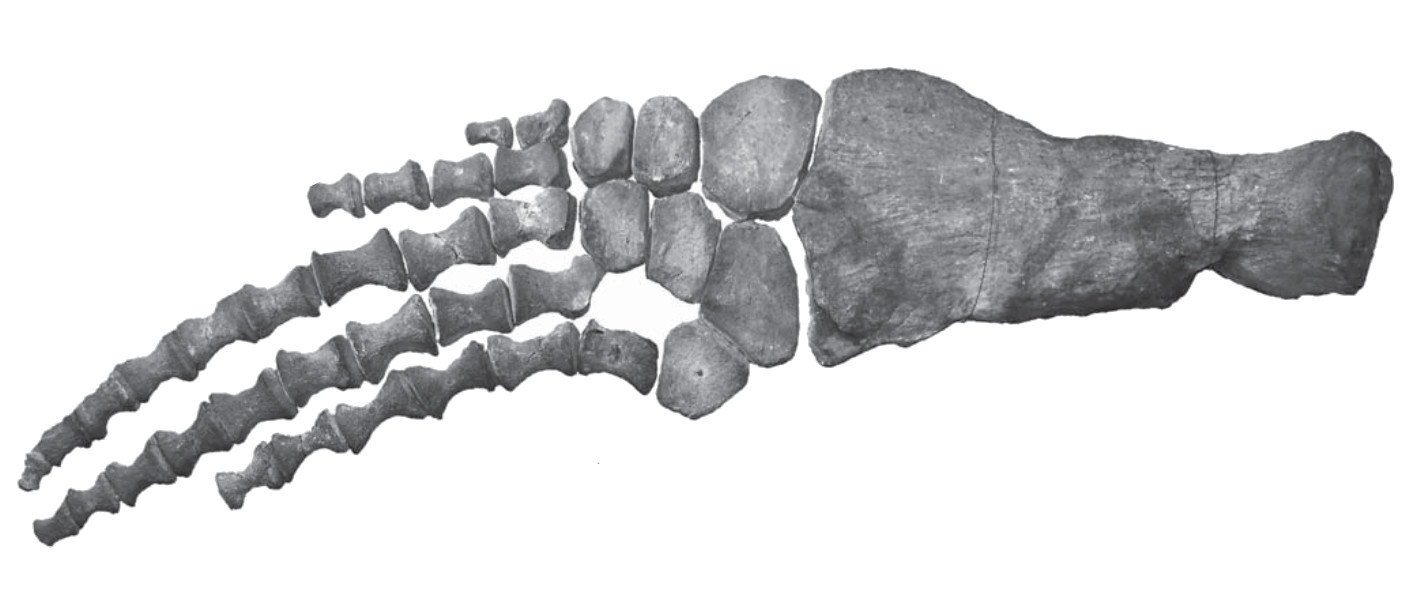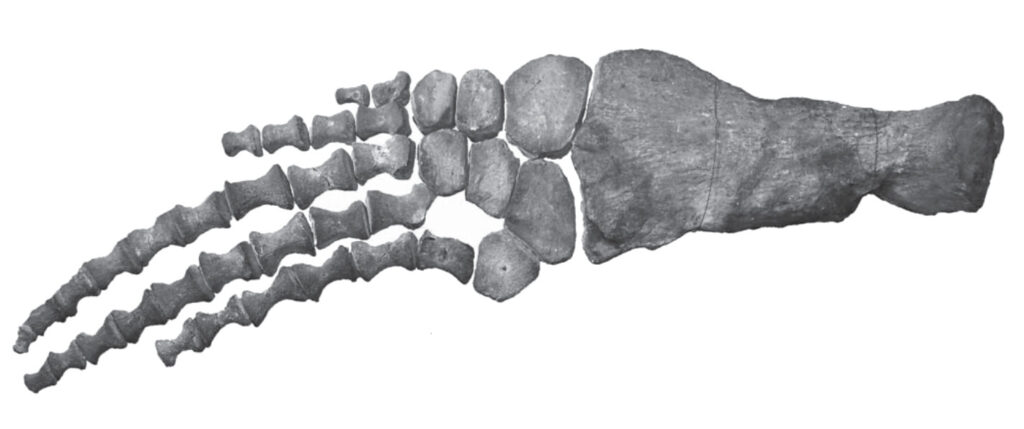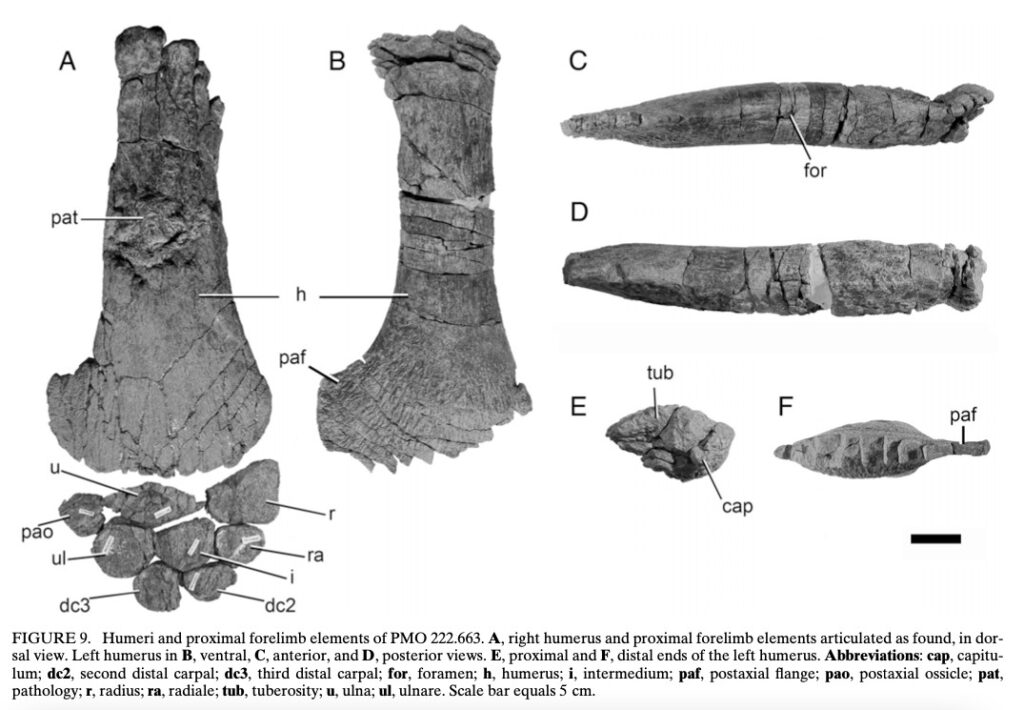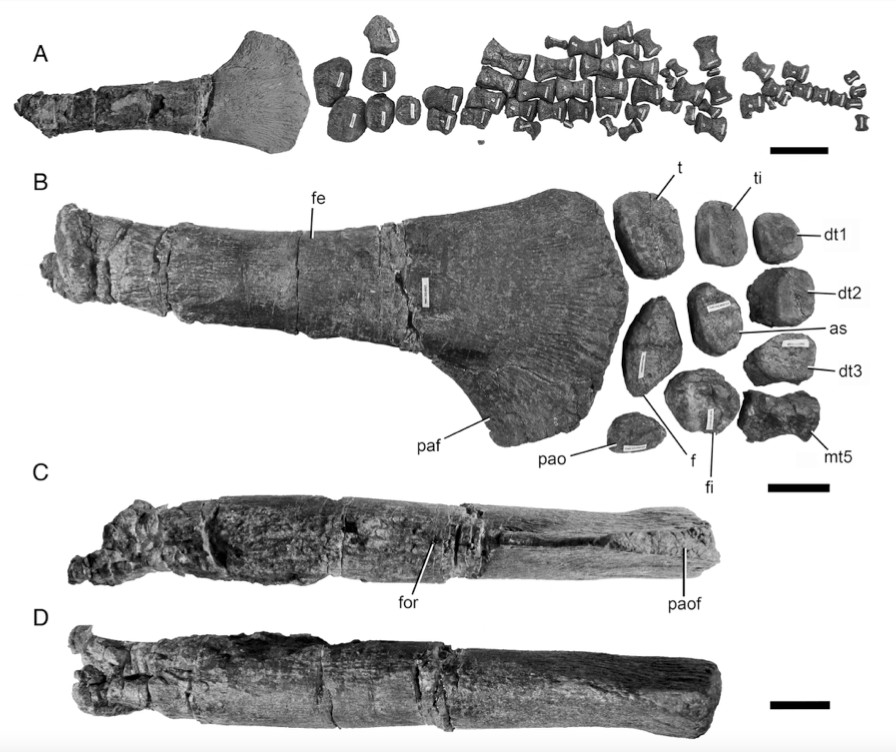Colymbosaurus

C. megadeirus
Colymbosaurus is a colymbosaurine (derived cryptoclidid) from the Late Jurassic of the UK and Svalbard, Norway. Two valid species are known, C. megadeirus from the UK, and C. svalbardensis from Svalbard, Norway. Benson and Bowdler (2014) revised the genus Colymbosaurus and summarised its complicated history:
“Seeley (1869) (p.97-101) listed two partial postcranial skeletons from the Kimmeridge Clay Formation of Ely…and Haddenham… in Cambridgeshire as belonging to a new species, Plesiosaurus megadeirus Seeley 1869. P. megadeirus later became the type species of Colymbosaurus Seeley 1874, and has been suggested as a junior synonym of Plesiosaurus trochanterius Owen 1840, based on a right humerus from Shotover Hill, Oxfordshire (NHMUK PV OR31786; Owen 1840; Phillips 1871:fig. 162; see Brown 1981). Thus, specimens of both P. trochanterius and P. megadeirus have generally been referred to Colymbosaurus trochanterius. Brown (1981) described Colymbosaurus (as C. trochanterius) based on numerous referred specimens from the Kimmeridge Clay and Portland Stone formations of the United Kingdom. However, Seeley’s (1869) syntypes of C. megadeirus…have never been described or figured. Therefore, the basis for referrals of other specimens to Colymbosaurus is weak.” (p.1052)
Benson and Bowdler (2014) concluded that C. trochanterius is a nomen dubium. They referred the holotype specimen of that species to Colymbosaurus indet, and reestablished C. megadeirus as the type species of Colymbosaurus, represented by two syntype specimens.

Brown et al. (1986) suggested that Colymbosaurus and Kimmerosaurus may have been congeneric. This is because Kimmerosaurus is only known from skull material and some neck bones, while Colymbosaurus is known only from postcranial material including neck bones, and the neck bones preserved in both taxa have a closely similar morphology (Brown 1981, Brown et al. 1986). However, Benson and Bowdler (2014) demonstrated that Colymbosaurus and Kimmerosaurus are really taxonomically distinct. In particular, the hypophyseal ridge of the atlas-axis is different in each taxon, an atlantal rib appears to be present in Kimmerosaurus, whereas it is absent in Colymbosaurus, the combined width of the cervical prezygapophyses is narrower in Colymbosaurus, and the proportions of the anterior vertebral centra are also different (Benson and Bowdler 2014).
A second valid species of Colymbosaurus was first described by Persson (1962) as ‘Tricleidus‘ svalbardensis based on a partial skeleton comprising the posterior postcranium (PMO A27745) from Svalbard, Norway. It was found accidentally in 1931 by “three English physicians, Dr. Freeze [No, really!], Dr. Maller and Dr. Paul, who studied the influenza in Spitzbergen” (Persson 1962)(p. 67). The skeleton was displayed in the Palaeontological Museum, Oslo (see photograph below), with the arrangement of the bones based on a photograph of the specimen taken in situ (Persson 1962). This specimen was later referred by Knutsen et al. (2012a) to Colymbosaurus. It was the first cryptoclidid described from the Slottsmøyer Member of the Svalbard archipelago, Norway, but dozens of cryptoclidids have subsequently been found and described from there including, including additional specimens of Colymbosaurus svalbardensis, and the genera Djupedalia, Spitrasaurus and Ophthalmothule (Roberts et al. 2017, Roberts et al. 2020).
Roberts et al. (2017) amended the diagnosis of Colymbosaurus by Benson and Bowdler (2014).



